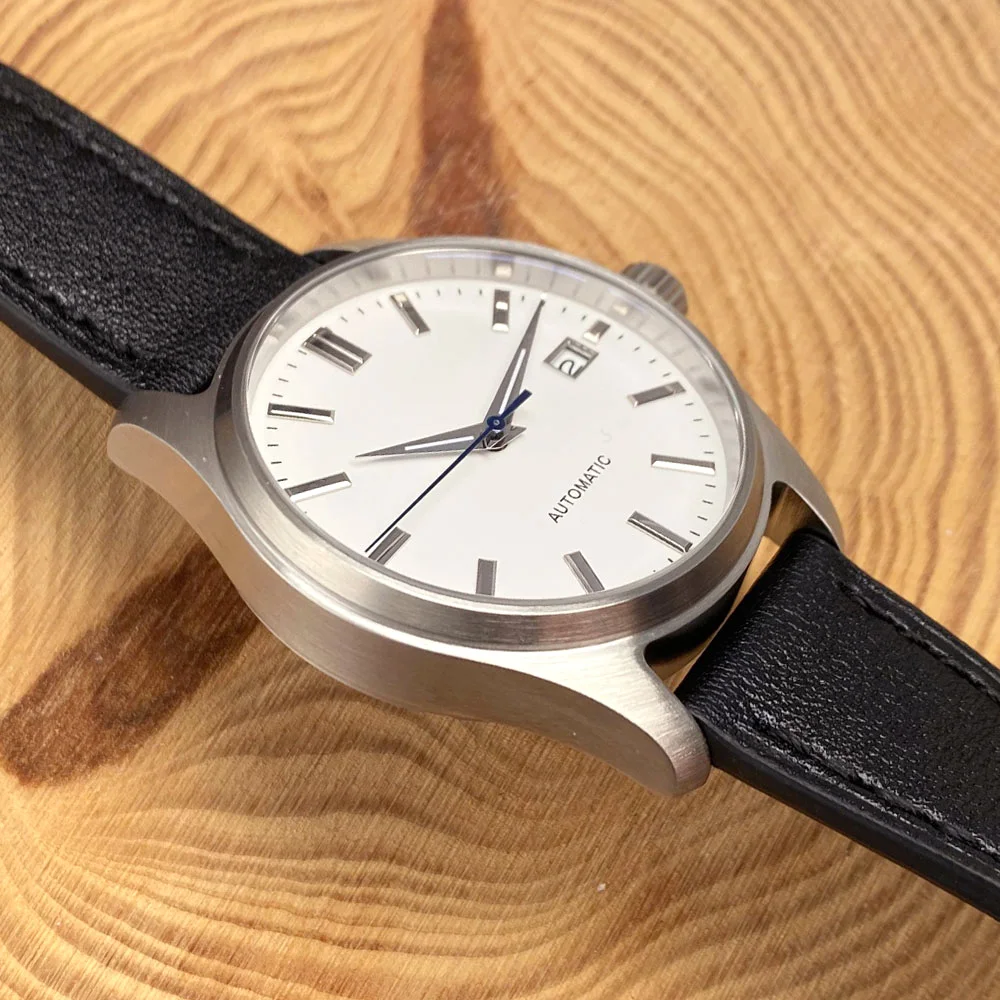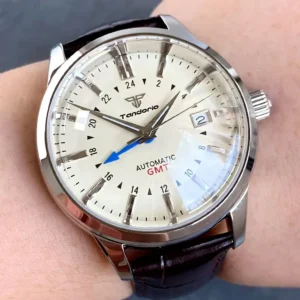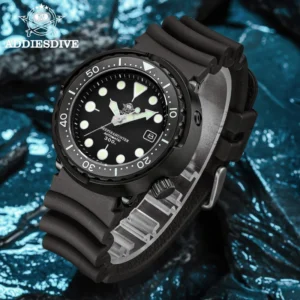Introduction: The Symbiotic Relationship Between Ocean Exploration and Timekeeping
Few relationships in the world of horology are as profound as the connection between ocean exploration and dive watches. As humanity ventured beneath the waves, reliable timekeeping transformed from a convenience to a necessity—a literal lifeline for those daring to explore the underwater realm. The evolution of dive watches represents one of the most fascinating examples of form following function in the history of mechanical engineering.
Every feature found on modern dive watches—from their robust cases and luminous dials to their unidirectional bezels and substantial water resistance—emerged as direct solutions to the challenges faced by underwater pioneers. These timepieces weren’t designed in sterile laboratories but were forged through practical experience in the harshest environments imaginable.
What began as vital instruments for naval operations and scientific expeditions have transcended their utilitarian origins to become enduring symbols of adventure and human ingenuity. Even in today’s digital age of advanced dive computers, the mechanical dive watch remains relevant both as a backup timing device and as a connection to the rich heritage of underwater exploration.
In this article, we’ll trace how marine exploration directly shaped the development of dive watches, from their humble beginnings to their technological pinnacles, and examine their cultural impact that extends far beyond the depths for which they were designed. The comprehensive history of dive watch engineering reveals an ongoing dialogue between adventurers and watchmakers that continues to this day.
I. The Birth of Water Resistance: Early Maritime Challenges and Solutions
Long before recreational diving became possible, maritime professionals recognized the critical need for reliable timekeeping during underwater activities. Early sailors and pearl divers would leave their precious timepieces onboard ships, as conventional watches with their vulnerable leather straps and unsealed cases were quickly ruined by even minimal exposure to moisture.
The earliest attempts at water-resistant watches came with significant limitations. Early 20th-century “waterproof” watches often featured tight-fitting cases that provided minimal protection against splashes but failed completely when submerged. These rudimentary solutions highlighted the need for more sophisticated approaches to water resistance.
Pioneering Waterproof Case Designs
The breakthrough came with the development of screw-down case backs and crowns—innovations that created compression seals growing tighter under pressure. These engineering solutions addressed the primary vulnerability points where water could penetrate a watch case. The introduction of rubber gaskets further enhanced water resistance by creating flexible seals that could maintain integrity despite changes in temperature and pressure.
Naval operations during the early 20th century created significant demand for truly waterproof timepieces. Military divers performing underwater sabotage, reconnaissance, and salvage operations required reliable instruments that could withstand not just water but also significant pressure at depth. Commercial diving operations similarly drove innovation as they pushed into deeper waters for construction and salvage work.
The timeline of diving watch innovations shows how each incremental improvement in water resistance came as a direct response to the expanding scope of underwater activities. Testing methods evolved from simple water immersion to sophisticated pressure chambers that could simulate the conditions of deep-sea diving. These early developments laid the essential groundwork for what would become the modern dive watch.
II. The Golden Age: When SCUBA Revolutionized Dive Watch Development
The invention and subsequent popularization of Self-Contained Underwater Breathing Apparatus (SCUBA) in the mid-20th century fundamentally transformed the relationship between humans and the underwater world. As diving became more accessible, it created entirely new requirements for underwater timekeeping. No longer was water resistance alone sufficient—divers needed specialized features to track bottom time, monitor air consumption, and manage decompression obligations.
The sudden expansion of recreational diving created unprecedented market demand for purpose-built dive watches. What had previously been a niche product for military and commercial use now became sought after by a growing community of underwater enthusiasts eager to explore the oceans.
The Dive Watch Template Emerges
During this golden age, the fundamental template for the modern dive watch was established. Key features became standardized: rotating timing bezels, high-contrast dials with substantial luminous markers, and robust cases capable of withstanding significant depths. These weren’t merely aesthetic choices but critical functional requirements for underwater operation.
Military specifications played a crucial role in standardizing dive watch characteristics. Various naval forces developed detailed requirements for diving timepieces, demanding features like unidirectional bezels (preventing accidental extension of dive time), secured crowns, and specific luminosity standards. These military specifications often pushed watchmakers to develop solutions that would later benefit civilian models.
The evolution of dive watch technology accelerated dramatically during this period. Innovations previously deemed impossible became standard as manufacturers competed to create timepieces that could go deeper, remain more legible, and provide greater reliability in extreme conditions. Today’s automatic dive watches still reflect the fundamental design language established during this golden age, though with significantly enhanced materials and manufacturing techniques.
III. Innovations Born of Necessity: How Underwater Challenges Shaped Key Features
A. The Battle Against Pressure
The continuous push to explore deeper underwater environments created unprecedented challenges for watch design. Water pressure increases by approximately one atmosphere for every 33 feet (10 meters) of depth, placing enormous strain on a watch’s case, crystal, and seals. This relentless physical force demanded innovative engineering solutions.
Early dive watches rated for modest depths gave way to “professional” models designed to withstand hundreds of meters of water pressure. This progression wasn’t merely marketing—it reflected the actual needs of divers venturing into deeper territories. Case construction evolved from simple designs to sophisticated architectures featuring thicker case walls, reinforced case backs, and crystals specifically engineered to resist deformation under pressure.
Material evolution played a crucial role in this battle against pressure. Early plated brass cases gave way to solid stainless steel construction, offering superior strength and corrosion resistance. Later innovations introduced exotic materials like titanium and ceramic composites, providing even greater durability while reducing weight—a significant advantage during long dives.
B. Visibility in the Abyss
Perhaps no challenge was more fundamental to underwater timekeeping than visibility. The underwater environment, with its rapidly diminishing light levels and color filtration, demanded specific solutions to maintain legibility—a literal life-or-death requirement for divers tracking critical timing information.
Luminescent technologies evolved dramatically in response to these challenges. Early radium-based compounds gave way to tritium, and later to non-radioactive photoluminescent materials that could provide hours of visibility after brief exposure to light. The size and placement of luminous markers underwent careful optimization based on actual underwater visibility testing.
Dial designs evolved with high-contrast color schemes specifically chosen for underwater legibility. Black dials with white markers became standard not for aesthetic reasons but because this combination maintained visibility at depth when colors like red and orange disappeared due to light filtration. Some manufacturers introduced distinctive colored dials after discovering specific hues that maintained better visibility in certain underwater conditions.
C. Specialized Tools for Extreme Environments
As diving operations pushed into more extreme territories, specialized features emerged to address unique challenges. Perhaps the most famous example is the helium escape valve, developed to address the issue of helium molecules penetrating watch cases during saturation diving. These tiny molecules would enter the watch during pressurized living conditions but couldn’t escape during decompression, potentially causing the crystal to pop off. The helium escape valve—essentially a one-way pressure relief valve—solved this problem elegantly.
Some manufacturers experimented with integrating depth gauges and extended timing scales directly into watches, creating more comprehensive tools for divers. Anti-magnetic properties became increasingly important as divers worked around underwater equipment generating magnetic fields that could disrupt mechanical watch movements.
These innovations weren’t merely theoretical—they emerged directly from the engineering behind adventure watch cases and were tested in actual diving conditions. Today’s professional-spec dive watches incorporate these features into sophisticated designs that balance heritage aesthetics with cutting-edge performance.
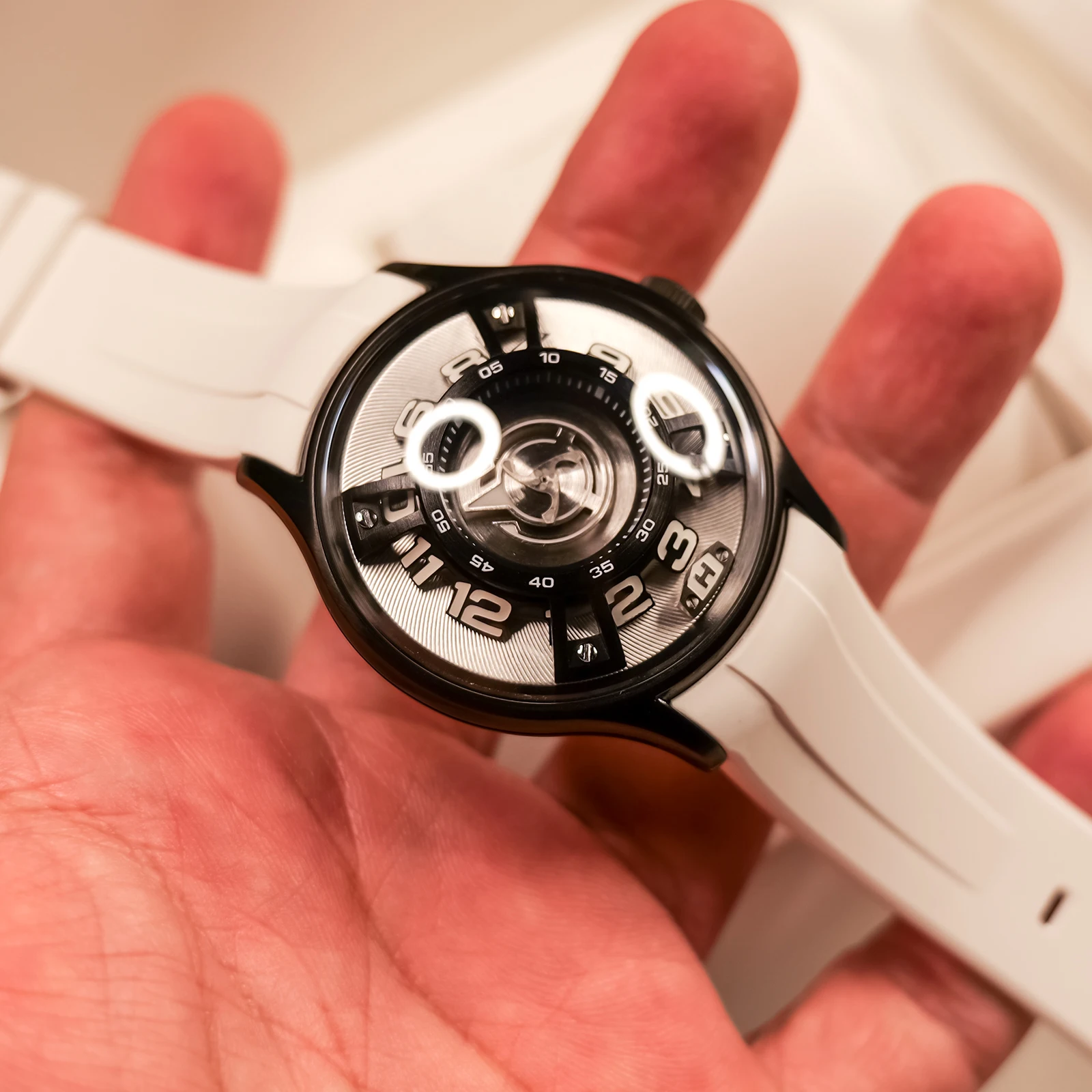
IV. From Underwater Labs to Ocean Depths: Testing Grounds for Horological Innovation
The true laboratory for dive watch development wasn’t found in watchmaking facilities but in the extreme underwater environments where these timepieces were deployed. Underwater habitats like SEALAB—where aquanauts lived for weeks at depths exceeding 200 feet—provided unprecedented testing grounds for timepiece durability and functionality under prolonged exposure to pressure, humidity, and corrosive saltwater.
Professional diving organizations established rigorous protocols to validate watch performance under actual diving conditions. These tests went far beyond simple pressure testing, examining factors like shock resistance during underwater construction work, legibility in variable lighting conditions, and reliability after repeated exposure to saltwater and decompression cycles.
Research expeditions pushed watches to their absolute limits, often revealing weaknesses that would drive the next generation of improvements. When a particular model failed during an expedition—whether due to water ingress, mechanical failure, or insufficient legibility—manufacturers gained valuable insights that directly influenced future designs.
The relationship between watch manufacturers and exploration teams became symbiotic. Watchmakers provided specialized equipment to expeditions in exchange for field testing and feedback, while exploration teams received timepieces specifically adapted to their unique requirements. This reciprocal relationship accelerated innovation far beyond what would have been possible through laboratory testing alone.
The milestones in underwater watch engineering weren’t achieved in isolation but through this dynamic interplay between theoretical design and practical application in the most challenging environments imaginable.
V. Beyond Function: The Cultural Impact of Dive Watches
While engineered primarily as functional tools, dive watches transcended their utilitarian origins to become powerful cultural symbols. Their association with underwater adventure, inherent ruggedness, and purpose-built aesthetics captured the public imagination, transforming specialized equipment into objects of desire even for those who never ventured beneath the waves.
The distinctive aesthetic of dive watches—characterized by bold hands, substantial markers, and robust construction—influenced broader watch design trends well beyond the diving category. Elements originally developed for underwater legibility and durability became prized design features across the watchmaking spectrum, demonstrating how functional requirements can drive aesthetic evolution.
Cinema played a significant role in this cultural elevation. When iconic dive watches appeared on the wrists of film heroes during underwater adventures and beyond, they cemented their status as symbols of capability and sophistication. These cultural associations helped dive watches transition from specialized equipment to style statements without abandoning their technical heritage.
Perhaps most remarkably, mechanical dive watches have maintained their cultural significance even as digital alternatives have surpassed them in pure functionality. This enduring appeal speaks to how these timepieces represent something beyond mere utility—they embody a connection to exploration heritage and mechanical ingenuity that transcends their original purpose.
The dive watch heritage and evolution continues to influence contemporary design while maintaining a strong connection to its functional roots. This balance between heritage and innovation defines the enduring appeal of these distinctive timepieces.
VI. Modern Dive Watches: Heritage Meets Innovation
Contemporary dive watches represent a fascinating synthesis of traditional design language and cutting-edge materials science. Modern manufacturers have embraced advanced materials like ceramic bezels—virtually scratch-proof and resistant to fading—and grade 5 titanium cases that offer exceptional strength-to-weight ratios while remaining corrosion resistant. These material innovations preserve the traditional aesthetic while significantly enhancing performance.
International standards like ISO 6425 now codify the requirements that define a true dive watch. These standards ensure functional integrity by specifying minimum water resistance (typically 100 meters), bezel functionality, legibility standards, and resistance to magnetic fields and shock. Such standardization has helped maintain the functional credibility of dive watches even as they’ve become fashion accessories.
The influence of vintage designs on contemporary models highlights the emotional connection many enthusiasts feel with the golden age of underwater exploration. Manufacturers frequently reference iconic designs from the 1950s and 1960s while incorporating modern manufacturing techniques and materials—creating timepieces that honor heritage while exceeding the capabilities of their predecessors.
Despite the ubiquity of digital dive computers, traditional mechanical dive watches remain relevant in modern diving practices. Many professional divers still carry analog timepieces as backup timing devices, appreciating their reliability, simplicity of operation, and independence from batteries or electronics that could fail in remote locations.
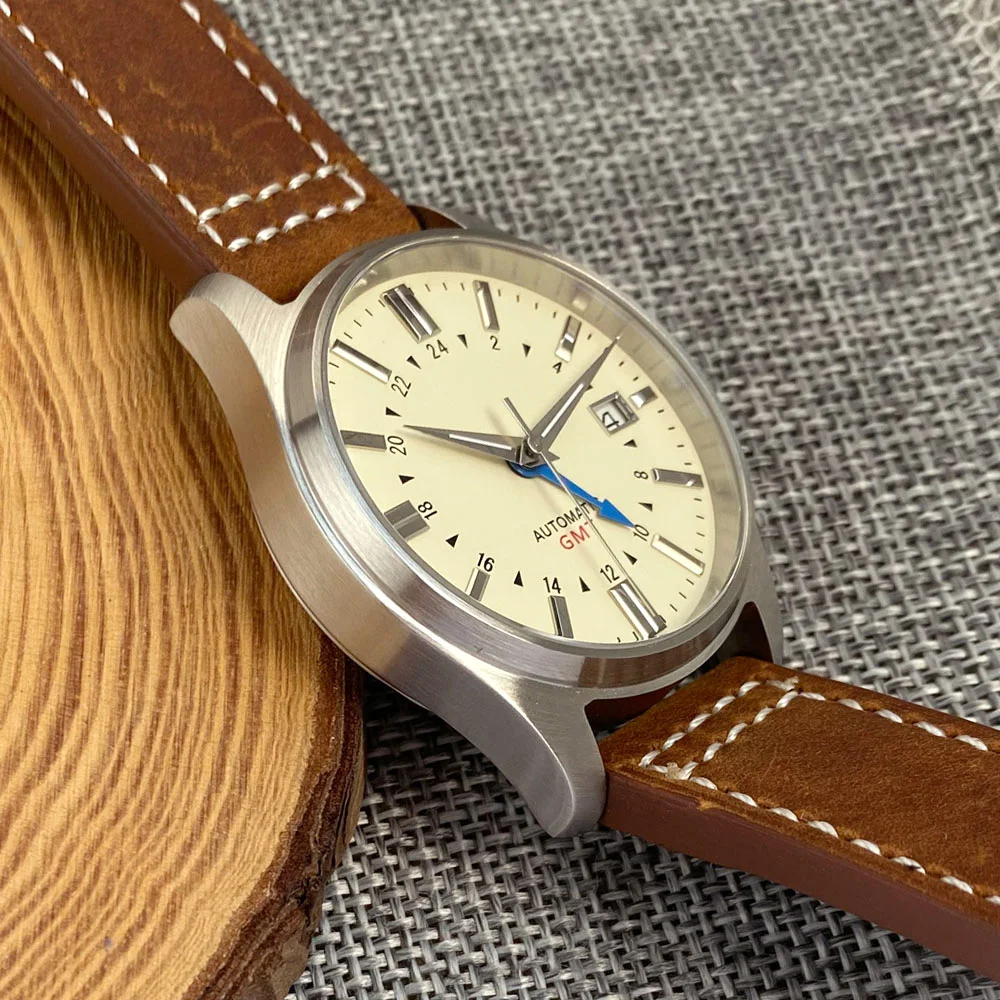
Today’s titanium automatic watches showcase how modern material science continues to enhance the fundamental design principles established during the golden age of dive watch development.
Automatic Chronograph Watches, Classic Style Dive Watches
$3,053.06 Select options This product has multiple variants. The options may be chosen on the product pageBronze Automatic Watches, Military Inspired Automatic Watches, Professional Spec Dive Watches
Price range: $1,442.21 through $1,442.82 Select options This product has multiple variants. The options may be chosen on the product pageProfessional Spec Dive Watches, Titanium Automatic Watches
$574.74 Select options This product has multiple variants. The options may be chosen on the product pageClassic Automatic Dress Watches, GMT Automatic Watches, GMT Dive Watches
Price range: $468.93 through $552.94 Select options This product has multiple variants. The options may be chosen on the product pageDay Date Automatic Watches, Professional Spec Dive Watches
Price range: $751.60 through $790.26 Select options This product has multiple variants. The options may be chosen on the product pageClassic Automatic Dress Watches, Classic Style Dive Watches
Price range: $742.56 through $1,099.56 Select options This product has multiple variants. The options may be chosen on the product page
VII. What Makes a True Dive Watch? Understanding Essential Requirements
What separates an authentic dive watch from a merely water-resistant timepiece? The distinction lies in specific technical criteria developed through decades of underwater experience:
Minimum Water Resistance
A true dive watch must offer at least 100 meters (330 feet) of water resistance, though professional models typically provide 200-300 meters or more. This rating represents static pressure testing in laboratory conditions—actual water resistance during dynamic underwater movement may differ.
Unidirectional Rotating Bezel
Perhaps the most distinctive feature of dive watches is their rotating timing bezel with minute markings. This bezel must rotate only counterclockwise (unidirectional) as a safety feature—if accidentally bumped, it will only show less time remaining rather than more, encouraging conservative timing.
Legibility Standards
Authentic dive watches must maintain legibility in darkness, typically requiring luminous material on the hands and hour markers. The hour hand must be clearly differentiated from the minute hand to prevent confusion, and the watch must include some indication that it’s running (usually a luminous second hand or indicator).
Magnetic Resistance
Professional dive watches must offer resistance to magnetic fields, as underwater equipment and instruments can generate magnetism that affects mechanical watch movements. The ISO standard requires resistance to fields of at least 4,800 A/m.
Physical Durability
True dive watches must withstand thermal shock (sudden temperature changes when entering water), physical shocks that could occur during diving activities, and the corrosive effects of saltwater exposure.
Many classic style dive watches adhere to these requirements while maintaining the timeless aesthetic language that has defined dive timepieces for generations. When evaluating a dive watch, these technical criteria offer a framework for distinguishing truly capable instruments from merely decorative interpretations.
VIII. Are Dive Watches Still Relevant for Modern Marine Exploration?
In an era dominated by sophisticated digital dive computers that provide real-time depth, remaining bottom time, decompression obligations, and various safety calculations, do mechanical dive watches retain any practical relevance for underwater exploration? The answer is surprisingly affirmative.
Modern marine explorers and professional divers continue to utilize mechanical timepieces for several compelling reasons. First, mechanical watches offer unparalleled reliability in remote environments—they require no batteries, function without electronics that can fail, and operate independently of other systems. This self-sufficiency makes them ideal backup instruments.
The simplicity of mechanical watches represents a significant advantage in challenging environments. When faced with equipment failures, changing plans, or emergency situations, the straightforward operation of a rotating bezel and minute hand provides critical timing information without complex menus or settings to navigate.
Professional diving operations frequently implement redundant systems as a safety principle—never relying on a single device for critical functions. A mechanical watch serves as an ideal secondary timing device, operating on entirely different principles than electronic dive computers and therefore not subject to the same potential failure modes.
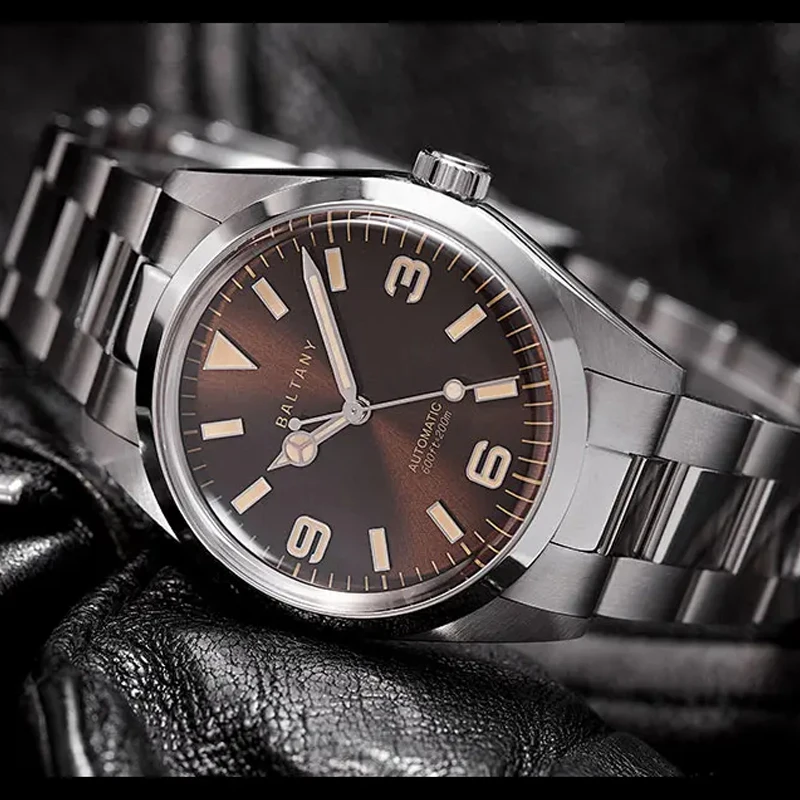
For expeditions spanning multiple environments and time zones, GMT dive watches offer particular utility, combining underwater timing capability with the ability to track multiple time zones—an increasingly valuable feature for global exploration teams.
Conclusion
The story of dive watches represents one of the most perfect examples of how human exploration directly shapes technological innovation. Every feature found on modern dive timepieces—from their pressure-resistant cases and luminous dials to their unidirectional bezels and specialized valves—emerged as direct solutions to challenges encountered beneath the waves.
This remarkable relationship between underwater exploration and watchmaking continues today, with each new depth record or diving technique potentially influencing the next generation of timepiece development. While the primary role of dive watches has shifted from essential equipment to cherished companions, their fundamental design remains firmly rooted in practical underwater requirements.
The dive watch stands as a testament to human ingenuity in overcoming environmental challenges—a mechanical embodiment of our determination to explore environments for which we are not naturally suited. In its balanced combination of form and function, heritage and innovation, the dive watch continues to represent our enduring relationship with the mysterious world beneath the ocean’s surface.

